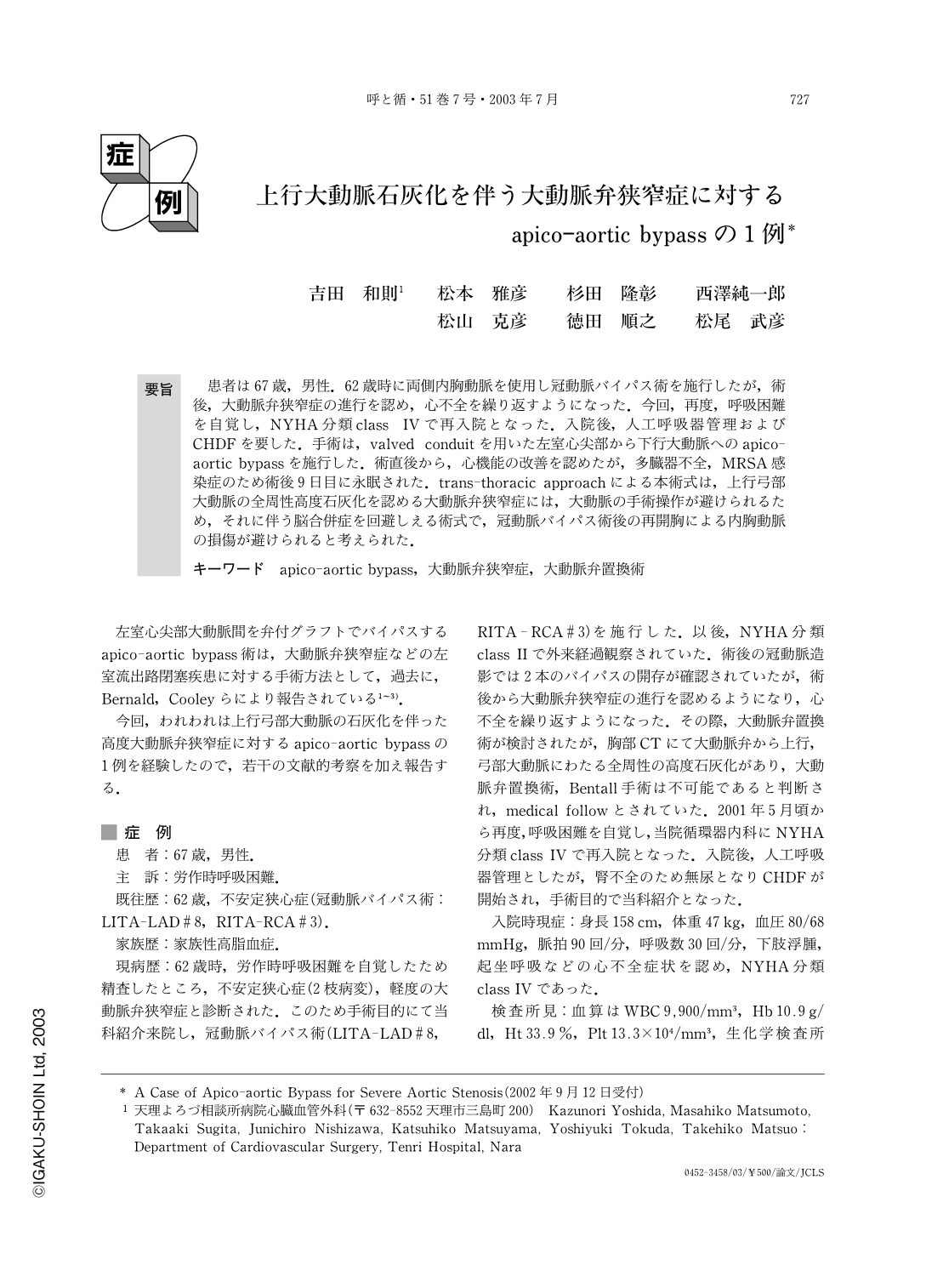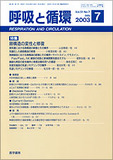Japanese
English
- 有料閲覧
- Abstract 文献概要
- 1ページ目 Look Inside
要旨
患者は67歳,男性.62歳時に両側内胸動脈を使用し冠動脈バイパス術を施行したが,術後,大動脈弁狭窄症の進行を認め,心不全を繰り返すようになった.今回,再度,呼吸困難を自覚し,NYHA分類class IVで再入院となった.入院後,人工呼吸器管理およびCHDFを要した.手術は,valved conduitを用いた左室心尖部から下行大動脈へのapico-aortic bypassを施行した.術直後から,心機能の改善を認めたが,多臓器不全,MRSA感染症のため術後9日目に永眠された.trans-thoracic approachによる本術式は,上行弓部大動脈の全周性高度石灰化を認める大動脈弁狭窄症には,大動脈の手術操作が避けられるため,それに伴う脳合併症を回避しえる術式で,冠動脈バイパス術後の再開胸による内胸動脈の損傷が避けられると考えられた.
A 67-year-old male with severe aortic stenosis after previous coronary artery bypass grafting underwent an apico-aortic bypass, because aortic valve replacement could not be performed due to extensive calcification covering a wide area of the aorta. In this case, computed tomography scan was very useful in diagnosing the site and severity of the calcification on the aortic wall. Postoperative course was initially good, but the patient died from multiple organ failure, 9 days postoperatively. This operation is still a useful technique as a ‘vent' in cases of aortic stenosis displaying extensive calcification of the thoracic aorta.

Copyright © 2003, Igaku-Shoin Ltd. All rights reserved.


